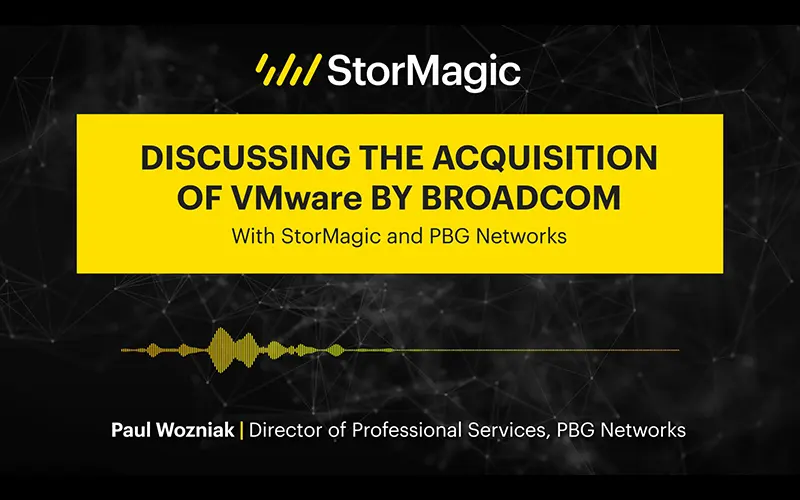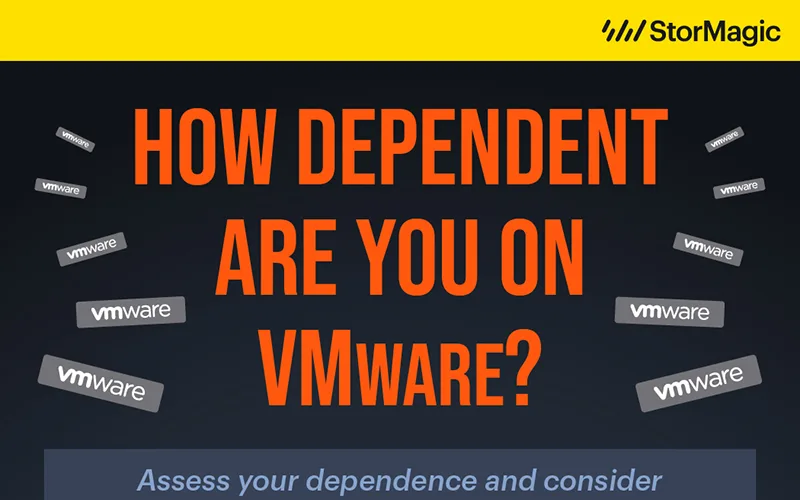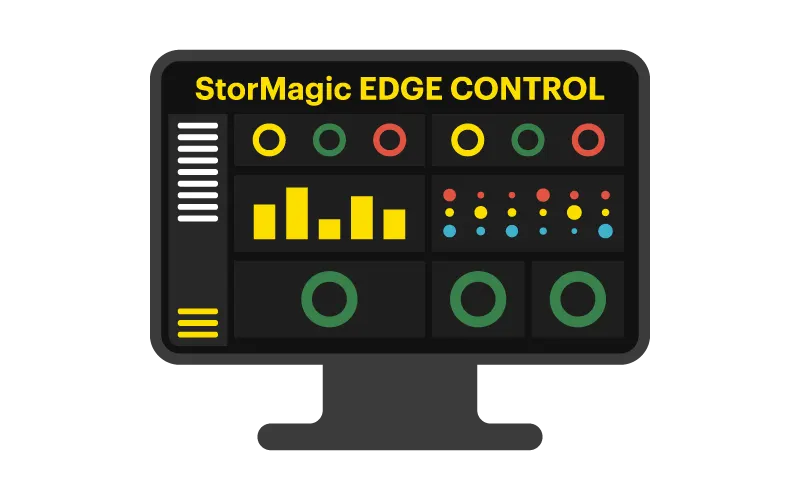Hyperconverged Infrastructure (HCI) is a hot topic, it seems that every server vendor in the IT industry is talking about it and has an offering or play in the space. But, what exactly is hyperconverged infrastructure? Simply put, hyperconverged infrastructures are solutions that combine compute, storage, networking and virtualization into a single platform. You can read a more detailed description of HCI with our Hyperconvergence Beginners Guide.
As with everything in IT, there are multiple ways to achieve this. You can purchase a prebuilt, preconfigured appliance, or alternatively, you can “build-your-own (BYO)” solution from scratch. Although each method has their pros and cons, in this blog post, we’re looking specifically at the benefits of building your own HCI solution.
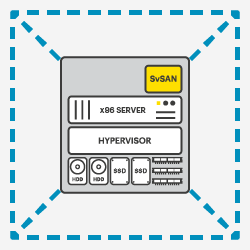
1. Right-Size The Solution
It is possible to build an HCI solution to fit your specific requirements and budgets in terms of compute requirements and storage capacity, rather than use a “one size fits all” solution that occurs with the appliance-based approach and can lead to over-provisioning.
This is especially important with the Internet-of-Things (IoT) or in ROBO/edge computing environments, where a small footprint (power/cooling/physical size) may be required. For harsh environments, the BYO approach makes it possible to build hardened/fanless solutions, which is not an option with the purpose-built appliances, which are aimed at “clean” datacenter environments.
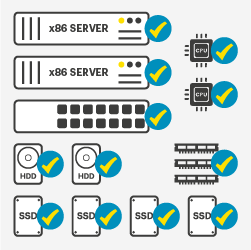
2. Best Of Breed Technology
Building a hyperconverged solution enables a wider choice of technologies to be used to fit both performance and cost requirements. BYO allows you to select each individual component, including server brand, number of CPUs and model, memory DIMM size and configuration, disk capacity and type (NVMe, SSD, HDD, memory channel storage), and network adapters (1 GbE, 10 GbE, InfiniBand).
Additionally, the BYO model makes it possible to swap out and replace individual components as they become available, enabling the early adoption of new technologies, rather than having to wait or rely on the appliance vendors to build a new model.
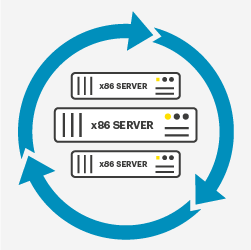
3. Reuse Of Existing Equipment
Depending on the performance requirements, it may be possible to repurpose existing servers you already have. This not only prolongs the useful life of the servers but also reduces the upfront acquisition costs.
A side-effect is that fewer servers are sent to landfill, contributing to your Green IT strategy.

4. Scale In Smaller Increments
The BYO HCI approach allows you to scale in smaller increments to fit with your business demands and ever decreasing IT budgets.
The CPU, memory and storage resources can be changed and grown independently of one another, at any time, to meet your timescales, rather than being restricted to just the configurations offered by the appliance vendors.
With the appliance approach the configurations are relatively fixed, so once you’ve selected an appliance, you have to live with its limitations for its lifetime. For example, if you wanted to increase storage capacity, it may require you to deploy a new larger appliance model, which invariably will increase the CPU and memory – which is not required or needed.
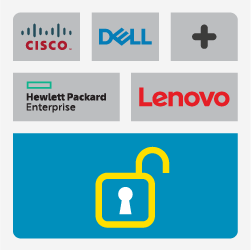
5. Eliminate Server Vendor Lock-In
Build hyperconverged solutions using any commodity x86 server from any server vendor. Typically, all server vendors use the same or similar individual components such as Intel processors, disks, memory DIMMs and NICs. This makes it possible to build the same server configuration from any of the server vendors.
Additionally, it is also possible to mix server vendors within the same HCI cluster, allowing you to select the server vendor based on the lowest cost at a given time. This is not generally possible with the appliance-based approach due to interoperability constraints, therefore locking you into a specific vendor or solution.
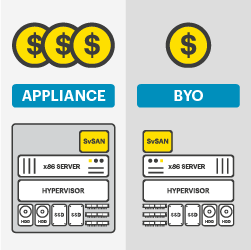
6. More Cost-Effective
Building your own infrastructure may be cheaper than using an appliance. HCI appliances have higher price tags mainly due to packaging, marketing, and interoperability testing. These cost substantial amounts of money to maintain and need to be recouped. However, for tech-savvy teams that understand Hardware Compatibility Lists (HCL) and component interoperability, building a solution from individual components will be cheaper to purchase.
Building Your Own HCI: All About Flexibility
From an acquisition perspective, the BYO approach to HCI will save money by avoiding the over-provisioning and being able to use commodity and repurposed hardware will add to the savings. From an operational cost perspective, BYO allows you to replace or repair individual server components, rather than having to swap out an entire appliance.
In conclusion, the benefits of building your own hyperconverged infrastructure solution can be summed up in one word: “Flexibility”.
- The flexibility to scale and grow the solution to your exact requirements
- The flexibility to use the technology components that meet your capacity, performance, and budget requirements
- The flexibility to purchase the servers from any server vendor and avoiding lock-in.
SvSAN is a software-defined virtual SAN solution that is simple, cost-effective and flexible. It allows organizations to follow both a build-your-own approach to hyperconverged infrastructure, as well as the pre-configured appliance method.
SvSAN can be installed onto any commodity x86 server and uses the server’s internal storage to build highly available hyperconverged infrastructure, eliminating the need for physical SANs.
If you’re ready to get started with SvSAN today, why not check out our free 15 day trial?


